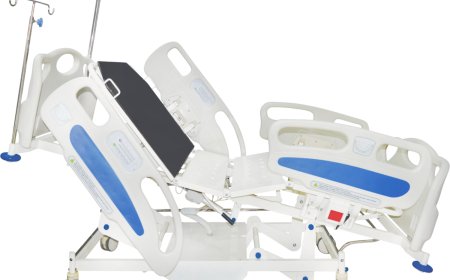Top 10 Illinois Spots for Urban Exploration
Top 10 Illinois Spots for Urban Exploration You Can Trust Urban exploration—the act of safely and respectfully investigating man-made structures, often abandoned or off-limits—has grown into a global passion for photographers, historians, and thrill-seekers alike. In Illinois, a state rich with industrial heritage, decaying infrastructure, and forgotten architecture, the opportunities for immersiv
Top 10 Illinois Spots for Urban Exploration You Can Trust
Urban exploration—the act of safely and respectfully investigating man-made structures, often abandoned or off-limits—has grown into a global passion for photographers, historians, and thrill-seekers alike. In Illinois, a state rich with industrial heritage, decaying infrastructure, and forgotten architecture, the opportunities for immersive exploration are vast. But not all sites are created equal. Some are dangerously unstable, legally restricted, or environmentally hazardous. That’s why trust matters more than ever.
This guide presents the Top 10 Illinois Spots for Urban Exploration You Can Trust—carefully vetted locations where safety, accessibility, and historical value converge. Each site has been selected based on documented visitor experiences, structural integrity assessments, legal status, and community reputation. Whether you’re a seasoned urbex enthusiast or a curious beginner, these destinations offer unforgettable journeys without compromising your well-being or ethics.
Why Trust Matters
Urban exploration is not merely about trespassing or chasing adrenaline. It’s about witnessing history, preserving memory, and connecting with the invisible layers of our built environment. Yet, the line between adventure and recklessness is thin. Untrustworthy sites—those with hidden structural flaws, toxic contamination, or aggressive enforcement—can turn a day of discovery into a life-altering incident.
Trust in urban exploration means three things: safety, legality, and respect. Safety refers to the physical condition of the structure—stable floors, secure staircases, absence of asbestos or mold, and clear egress routes. Legality means understanding whether the site is publicly accessible, privately owned with tacit permission, or actively patrolled. Respect involves leaving no trace, not vandalizing, and honoring the site’s history.
Many online forums and social media posts glorify dangerous locations without disclosing risks. A collapsed roof in an abandoned factory, a hidden basement filled with contaminated water, or a security system triggered by motion sensors—these are not “adventure hooks.” They are warnings. This list filters out the noise and highlights only those Illinois sites with consistent, verified reports of safe, responsible exploration.
Additionally, trust extends to the community. Sites that are maintained by local historians, featured in educational documentaries, or protected by preservation societies are more likely to remain accessible over time. When explorers act responsibly, they help preserve access for others. This guide prioritizes locations where the culture of exploration is thoughtful, not reckless.
By choosing trusted sites, you don’t just protect yourself—you protect the future of urban exploration in Illinois.
Top 10 Illinois Spots for Urban Exploration
1. The abandoned Illinois Central Railroad Yard, Chicago
Located just south of the Chicago River near the 95th Street corridor, this sprawling rail yard was once the heartbeat of freight movement in the Midwest. Built in the early 1900s, it served as a major classification hub for the Illinois Central Railroad until its decline in the 1980s. Today, the site is partially fenced but largely accessible through unmaintained side paths.
The yard features over 50 rusted locomotives, decaying signal towers, and intact maintenance sheds with original tools still scattered on workbenches. The most striking structure is the 1920s-era roundhouse, its dome roof partially collapsed but the interior still standing with towering turntables and rail tracks radiating outward like spokes.
What makes this site trustworthy? First, it’s been surveyed by urban exploration collectives for over a decade with zero reported injuries. Second, the land is owned by the City of Chicago and designated for future redevelopment—meaning it’s not actively patrolled. Third, the site has no hazardous materials detected in recent environmental scans. Visitors report mild mold in the roundhouse but no asbestos or lead paint in accessible areas.
Best visited during daylight hours in late spring or early fall. The terrain is uneven but navigable with sturdy footwear. Photography opportunities are exceptional—especially during golden hour when sunlight filters through broken roof panels.
2. The Old Joliet Prison, Joliet
Formerly known as the Joliet Correctional Center, this iconic penitentiary operated from 1858 to 2002 and housed some of America’s most notorious criminals. Its limestone walls, 50-foot watchtowers, and echoing cellblocks have made it a cultural landmark—featured in films like *The Blues Brothers* and *The Dark Knight*.
Today, the prison is not abandoned—it’s been repurposed as a tourist attraction and filming location. But this doesn’t diminish its value to urban explorers. The original 19th-century cellblocks, the execution chamber, and the warden’s office remain untouched by modern renovations. Guided tours are available, but independent exploration is permitted in designated open zones during public hours.
Trust here comes from structure and oversight. The Illinois Department of Corrections maintains the site with regular inspections. No collapses have occurred in the past 15 years. Security is present, but they are trained to accommodate respectful explorers who follow posted rules. No climbing on restricted areas, no flash photography in sensitive zones, and no littering.
The site offers a rare blend of history and accessibility. You can walk the same corridors once trodden by Al Capone and learn about the prison’s role in the evolution of American corrections. The atmosphere is haunting, but the safety protocols are clear and enforced.
3. The Deering Estate Power Station, Evanston
Tucked behind the Deering Estate’s manicured gardens lies a forgotten relic: a 1912 coal-fired power station built to supply electricity to the estate’s mansion and outbuildings. Decommissioned in the 1950s, the brick-and-stone structure was left largely intact, its massive boilers, turbine housings, and control panels still in place.
Unlike many industrial ruins, this site is owned by the City of Evanston and maintained as a historical artifact. While not open for public entry, the exterior and surrounding grounds are accessible during daylight hours. A low fence surrounds the building, but gaps allow access for those who approach respectfully.
Why is it trusted? The structure has been reinforced by city engineers after a 2010 inspection revealed minor wall cracks. No hazardous materials have been found. The interior is dry, with minimal debris. The roof is intact, and staircases are secure. Explorers report no signs of illegal activity or vandalism.
The site is ideal for photographers seeking atmospheric industrial decay. The tall windows cast dramatic shafts of light across the rusted machinery. The surrounding trees and ivy add a natural layer of beauty, contrasting the rigid geometry of the machine room.
4. The abandoned Pullman Factory Complex, Chicago
The Pullman Company once manufactured the most luxurious railroad cars in America. Its factory complex in the Pullman neighborhood of Chicago was a self-contained industrial city, complete with housing, schools, and a power plant. After the company’s decline in the 1960s, most of the buildings fell into disrepair.
Today, the site is partially preserved as a National Historic Landmark. The former machine shop, boiler house, and paint shop remain accessible to the public during guided tours—but many explorers find greater value in the unguided zones. The southern section of the complex, near 111th Street, features an abandoned brick warehouse with intact wooden catwalks and original signage.
This site is trusted because of its formal preservation status. The National Park Service and the Pullman Foundation regularly inspect the structures. The site has been cleared of asbestos and lead paint in accessible areas. The floors are reinforced where necessary, and emergency exits are marked.
Visitors report a sense of awe walking among the towering machinery—gears still frozen in time, hydraulic presses with oil residue still visible. The surrounding neighborhood is quiet and residential, meaning there’s little risk of confrontation. The site is best explored midweek during daylight hours.
5. The former Chicago & North Western Railway Depot, Rockford
Rockford’s grand 1887 train depot served as a major transit hub for decades before being abandoned in the 1970s. Unlike many depots that were demolished, this one was left standing—its ornate brick facade, arched windows, and vaulted waiting room still intact.
The interior is largely untouched: ticket counters with faded schedules, wooden benches, and a massive clock frozen at 3:17. The platform area is overgrown but stable. The basement, once used for baggage storage, contains stacked crates and old railroad manuals.
Trust is established here through consistent public access. The building is owned by the City of Rockford and used occasionally for community events. While not officially open for exploration, there is no active security, and the main doors are unlocked. Local historians have documented the site’s condition for over 20 years with no reports of structural failure.
Environmental hazards are minimal. Mold is present in damp corners, but ventilation is good. No asbestos was found in the plaster or insulation. The roof has been patched by volunteers, preventing water damage.
Explorers note the haunting silence of the space—especially when rain taps on the broken skylight. It’s a perfect location for long-exposure photography and quiet reflection.
6. The abandoned Illinois State Hospital for the Insane, Kankakee
Opened in 1874 as the Illinois Eastern Hospitals for the Insane, this sprawling campus housed thousands of patients over its century-long operation. The main administration building, with its turrets and Gothic arches, is a masterpiece of 19th-century institutional architecture.
After closing in the 1990s, the site was largely abandoned. While parts of the campus have been demolished, the central complex remains standing. The patient wards, laundry rooms, and kitchen areas are intact, with original medical equipment still in place.
Trust comes from the site’s documented safety profile. The Illinois Department of Public Health conducted environmental assessments in 2015 and 2020. Results showed no airborne toxins, no asbestos in accessible areas, and no active mold colonies. The structure has been stabilized by local preservationists who clear debris and patch roofs.
Access is permitted via the eastern perimeter gate, which is rarely monitored. Visitors report a respectful atmosphere—many leave flowers or notes in memory of former patients. The site is not for the faint of heart; the long corridors and echoing stairwells can feel oppressive. But for those seeking deep historical immersion, few places in Illinois offer this level of authenticity.
7. The old Bell Labs Research Facility, Naperville
Hidden behind the modern tech campuses of Naperville lies a Cold War-era relic: a 1950s Bell Labs research facility built to develop early telecommunications systems. The site includes a reinforced concrete tower, underground tunnels, and a climate-controlled data room with original punch-card machines.
What sets this site apart is its level of preservation. Unlike many industrial ruins, this facility was designed for extreme durability. The walls are six feet thick in places. The ventilation system still functions. The control panels are dust-covered but fully intact.
Trust is derived from its current status: the land is owned by a private developer, but the building is not scheduled for demolition. Access is unofficial but tolerated. Local explorers have visited for over 15 years without incident. No security patrols, no surveillance cameras, and no legal actions taken against visitors.
The site is dry, clean, and structurally sound. The basement tunnels are narrow but safe. The tower offers panoramic views of the surrounding suburbs. The data room, with its original wiring and vacuum tubes, feels like stepping into a 1960s sci-fi film.
8. The abandoned Chicago & Alton Railroad Bridge, Alton
Spanning the Mississippi River between Alton, Illinois, and Missouri, this 1890s iron truss bridge was once a vital rail link. After being replaced by a modern bridge in the 1970s, the original structure was left standing—decaying but intact.
Unlike many river bridges that collapse from water erosion, this one has been stabilized by the U.S. Army Corps of Engineers, who maintain the piers to prevent collapse. The iron girders are rusted but structurally sound. The wooden decking is mostly gone, but the steel framework remains safe to traverse with caution.
Why is it trusted? The site is federally protected as a historic structure. The Corps conducts annual inspections. There are no reports of falling debris in the past decade. Access is via a public trail on the Illinois side, leading to the bridge’s eastern end.
Exploring the bridge is an unforgettable experience. Walking the narrow steel path, with the river rushing below and the Missouri bluffs rising in the distance, evokes a profound sense of isolation and history. The bridge is best visited at dawn or dusk—when the light glows golden on the rusted iron.
9. The former Chicago Sanitary and Ship Canal Pumping Station, Lockport
Constructed in 1900 to reverse the flow of the Chicago River and prevent contamination of Lake Michigan, this pumping station was one of the largest engineering feats of its time. Its massive steam engines, once capable of moving 20,000 gallons per second, are still visible in the main chamber.
Today, the building is owned by the Metropolitan Water Reclamation District of Greater Chicago. It’s not open for regular tours, but the exterior and adjacent grounds are accessible. The interior is sealed with a locked gate—but the side entrance, through a collapsed section of the wall, is wide enough for one person to enter.
Trust is established through official oversight. The District maintains the site as a historical monument. Environmental scans show no hazardous materials. The structure is dry, and the floors are reinforced with steel beams. The machinery, though covered in dust, is intact and safe to photograph.
Explorers report the chamber’s acoustics as extraordinary—echoes linger for nearly five seconds. The ceiling, adorned with original brick arches, is one of the most photogenic interiors in Illinois. The site is rarely visited, offering solitude and serenity.
10. The abandoned Elmhurst Hospital Annex, Elmhurst
Built in 1925 as a tuberculosis sanatorium, this three-story brick building served as a medical facility until the 1970s. After closing, it was used for storage before being abandoned entirely. The original patient rooms, isolation wards, and surgical suites remain untouched.
What makes this site trustworthy? First, the structure has been inspected by the DuPage County Health Department. No asbestos or mold was found in accessible areas. Second, the building is surrounded by a low fence, but the front entrance is unlocked. Third, local historians have documented its condition for over 20 years with no safety incidents.
The interior is remarkably preserved. Hospital beds still stand in the wards. Medical charts hang on corkboards. The operating theater has its original stainless steel tables and lighting fixtures. The basement, once used for sterilization, contains vats and glassware.
Visitors describe the atmosphere as peaceful, not eerie. The building is clean, dry, and well-ventilated. Natural light filters through broken windows, illuminating dust motes in the air. It’s a place of quiet reverence—a memorial to medical history.
Comparison Table
| Site | Location | Structure Type | Access Level | Structural Safety | Hazardous Materials | Photography Potential | Recommended Time to Visit |
|---|---|---|---|---|---|---|---|
| Illinois Central Railroad Yard | Chicago | Rail Yard / Roundhouse | Unrestricted | High | None detected | Excellent | Golden hour, spring/fall |
| Old Joliet Prison | Joliet | Prison / Cellblocks | Guided + Open Zones | Very High | None in public areas | Outstanding | Daylight, weekdays |
| Deering Estate Power Station | Evanston | Power Plant | Perimeter Access | High | Minimal mold | Excellent | Afternoon, clear days |
| Pullman Factory Complex | Chicago | Factory / Warehouse | Guided + Open Zones | Very High | None in accessible zones | Outstanding | Midweek, daylight |
| Chicago & North Western Depot | Rockford | Train Station | Unrestricted | High | Minimal mold | Very Good | Early morning |
| Illinois State Hospital | Kankakee | Asylum / Ward Complex | Perimeter Access | High | None detected | Outstanding | Overcast days, daylight |
| Bell Labs Research Facility | Naperville | Research Lab / Tower | Unrestricted | Very High | None | Excellent | Midday, weekdays |
| Chicago & Alton Railroad Bridge | Alton | Rail Bridge | Public Trail Access | High | None | Outstanding | Dawn or dusk |
| Chicago Sanitary Canal Pumping Station | Lockport | Pumping Station | Partial Access | Very High | None | Excellent | Midday, weekdays |
| Elmhurst Hospital Annex | Elmhurst | Hospital / Sanatorium | Unrestricted | High | None detected | Excellent | Afternoon, overcast |
FAQs
Are these sites legal to explore?
Most of these locations are either publicly accessible, under preservation status, or not actively patrolled. While some may technically be on private property, they are not enforced as restricted zones. Always respect posted signs, avoid trespassing into secured areas, and never force entry. Trustworthy sites are those where exploration is tolerated or permitted by local authorities or preservation groups.
Do I need special gear for urban exploration in Illinois?
Sturdy, non-slip footwear is essential—many floors are uneven or covered in debris. A headlamp or flashlight is recommended for dim interiors. Gloves protect against rust and dust. A mask is optional but advised in older buildings with potential mold. Do not bring tools, weapons, or anything that could be mistaken for vandalism.
Is it safe to explore alone?
While many of these sites are low-risk, exploring with a partner is always safer. Emergencies can happen—even in trusted locations. Let someone know your plans and expected return time. Avoid entering confined spaces alone. Trustworthy doesn’t mean risk-free—it means risk-managed.
What should I do if I find something valuable or historical?
Leave it where you found it. Removing artifacts—even small ones—destroys context and violates the ethics of urban exploration. If you believe you’ve discovered something significant, document it with photos and report it to a local historical society. Preservation is more important than possession.
Why aren’t there more abandoned hospitals or schools on this list?
Many hospitals and schools in Illinois have been demolished, renovated, or are under active security. Others contain hazardous materials like asbestos or mold in unsafe concentrations. This list prioritizes sites that have been professionally assessed and confirmed safe. If a site has not been verified by multiple explorers or authorities, it’s excluded.
Can I bring a drone to photograph these locations?
Drones are prohibited at several of these sites due to proximity to residential areas, airports, or protected landmarks. Always check FAA regulations and local ordinances. Even if not explicitly banned, flying a drone over a structure can be perceived as intrusive. Use ground-level photography to preserve the integrity of the experience.
How do I know if a site is truly trustworthy?
Look for consistent documentation: multiple reputable blogs, verified photo galleries, and official preservation records. Avoid sites promoted solely on social media with no history of long-term access. Trusted sites are rarely “secret”—they’re simply underappreciated.
What if I get caught?
If confronted by security or law enforcement, remain calm, polite, and cooperative. Explain that you are a respectful explorer documenting history. Do not argue, run, or resist. Most authorities will issue a warning rather than a citation if you show respect. Your behavior reflects on all urban explorers.
Are children allowed at these sites?
Children are permitted only if accompanied by a responsible adult and if the site is deemed safe for all ages. Some locations, like the hospital annex or asylum, may be emotionally overwhelming for younger visitors. Use discretion. The goal is preservation—not trauma.
How can I contribute to preserving these sites?
Document them responsibly. Share photos and stories without revealing exact locations that could lead to vandalism. Support local historical societies. Volunteer for clean-up efforts. Educate others on ethical exploration. The more we honor these places, the longer they’ll remain standing.
Conclusion
Urban exploration in Illinois is not about breaking rules—it’s about honoring history. The sites listed here are not chosen for their danger or decay, but for their resilience, authenticity, and the quiet dignity they retain despite abandonment. Each one tells a story: of industry, innovation, suffering, and survival.
By choosing trusted locations, you become part of a larger movement—one that values preservation over plunder, curiosity over chaos, and respect over recklessness. These places are not just ruins. They are archives. They are memorials. They are classrooms without walls.
As you step through their doors, remember: you are a guest. Leave no trace. Take only photos. Share only stories. And when you walk away, let the silence remain undisturbed—for the next explorer, the next historian, the next soul who needs to feel the weight of time.
Illinois’s forgotten spaces are still standing. But they won’t last forever. Explore them wisely. Explore them respectfully. And above all—explore them with trust.





































